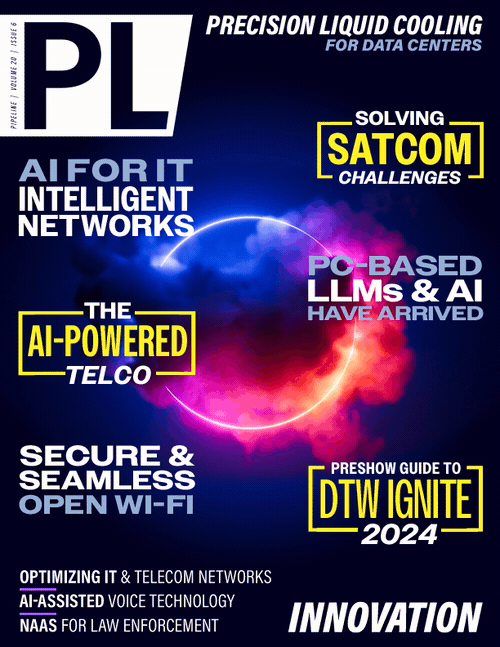Innovation is Key to Solving
Satcom's Challenges
By: Lars Bach

Customer demand for seamless connectivity is driving significant change across the satellite industry. Technology is advancing at a rapid rate, we’re witnessing huge expansion in LEO, operators are increasingly adopting multi-orbit strategies, and there is a growing recognition that to deliver ubiquitous connectivity to users, the satcom and telco markets need to learn to work together. The satellite industry is rapidly developing, both in terms of the number of players operating, and the different technologies being utilized. We’ve gone from a very stable situation ten years ago, with just a few players in the market operating in a very controlled fashion, to a big explosion of activity in the last five to six years of both satellites in orbit for communication purposes, as well as new players in the market.
However, operating in this new environment is complex and operators are faced with fresh challenges at both ground and space level. This is driving the need for new ways to secure operational capacity and mitigate interference between systems. It’s clear that the industry needs innovation across the spectrum if it is to succeed in this increasingly challenging landscape. While it’s encouraging that we’re already seeing innovations such as virtualization and new antenna technology making a difference, these are at the same time creating some challenges of their own. There is clearly still some way to go.
The End of Siloed Working?
The end users today are not concerned about how they get their connectivity; they just want to be able to connect with the wider world in the same easy fashion as when they connect with their local community. They want connectivity that is reliable, high bandwidth, and cost efficient, no matter where they are, whether that is in London, on top of Mount Everest, or in the middle of the Pacific Ocean. However, delivering this ubiquitous connectivity is difficult for both satellite operators and terrestrial cellular networks to achieve on their own. After years of working in separate silos, satcoms and telcos are coming to realize that working together may well bring mutual benefit.
Satellite networks bring unparalleled coverage and reliability to the table, offering connectivity solutions in regions where terrestrial infrastructure is lacking or economically unfeasible to deploy. By partnering with telco providers, satellite operators stand to gain access to established terrestrial networks, enabling seamless integration with existing communication infrastructure.
This collaboration facilitates the delivery of hybrid solutions that combine the strengths of satellite and terrestrial technologies, providing customers with robust, end-to-end connectivity solutions. Whether it's extending broadband services to remote areas, enhancing disaster recovery capabilities, or supporting IoT deployments, a partnership between satellite operators and telco providers stands to unlock new opportunities for innovation and growth.
Managing Cause and Effect
The need for communication and connectivity are key drivers of technological innovation across multiple sectors, from commercial to defense. Being connected and having access to high bandwidth data is essential for much of our key infrastructure; many day-to-day systems and functions will grind to a halt if connectivity breaks. However, for satellite operators, the proper operation of their own satellite networks is not the only thing that they must consider. For networks do not operate in isolation. They must also consider the entire electromagnetic sphere.
Every system impacts every other system around it, yet these environmental impacts can be difficult to predict. So as an industry, we have to find new ways of maintaining operational efficiency.
You can run tests on a sub-system in a lab and deploy it out in the field and everything looks good, but if multiple systems are deployed in one area, or on one vehicle, for instance, the
interference between these systems can be significant. It is highly complicated and often time-consuming to test, correct and optimize these components. Therefore, the industry is looking for new
ways of ensuring that separate systems can work together. Not only are there these potential interferences happening on the ground, but there are also a lot of new players starting to operate in
the space segment alongside the traditional players. There is some uncertainty over how this will work in five to ten years when we have new players in



















